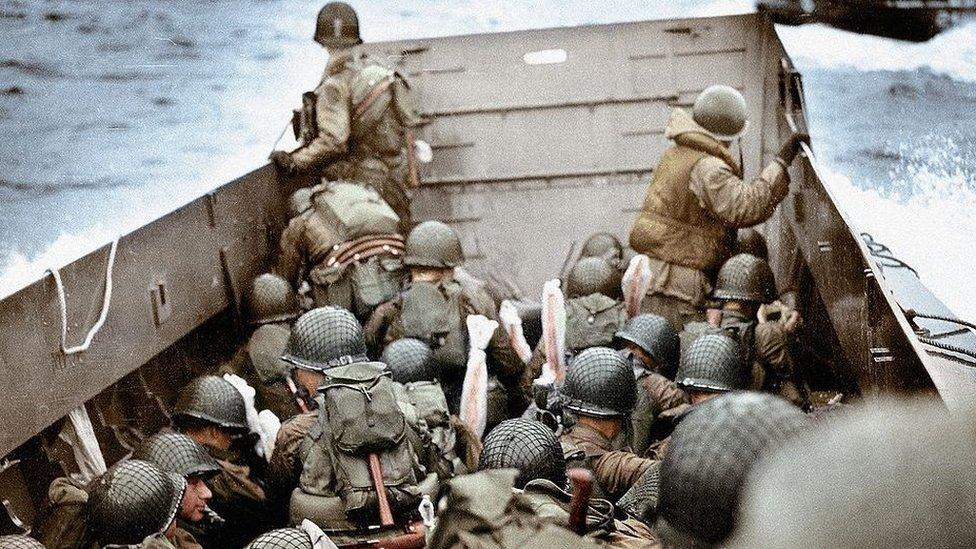Island Farm PoW camp: Target to buy visitor centre reached
- Published
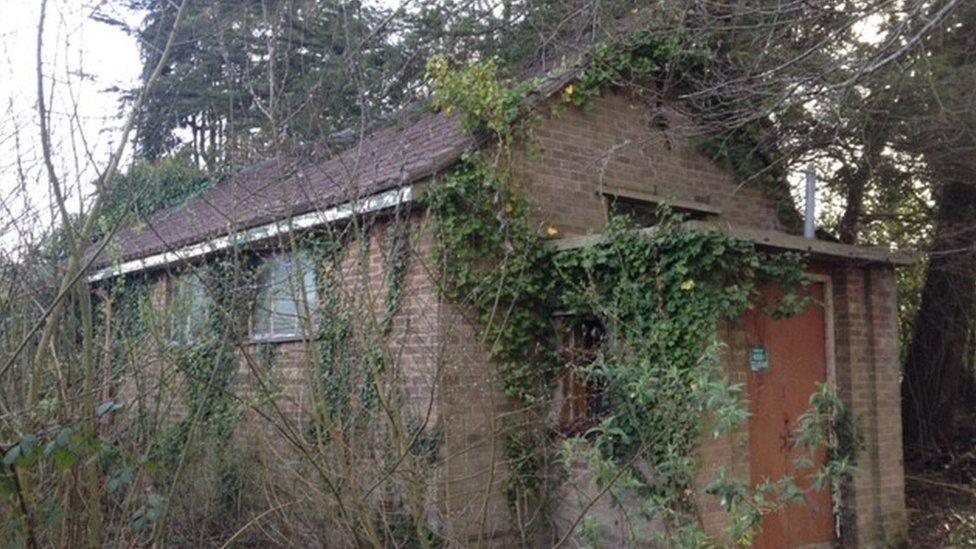
A preservation group has raised £20,000 through crowdfunding and secured pledges of match-funding to buy the visitor centre
Volunteers at the site of the biggest escape attempt by German World War Two inmates on British soil say they are within "sniffing distance" of securing the future of its visitor centre.
Hut 9 Preservation Group has spent nine years restoring the hut escaped from at Island Farm prisoner of war (PoW) camp.
Last year the privately-owned visitor centre was put up for sale and the group were given first refusal.
Through crowdfunding they have secured £20,000 for the centre in Bridgend.
They have also won pledges of match-funding from several charities and community councils.
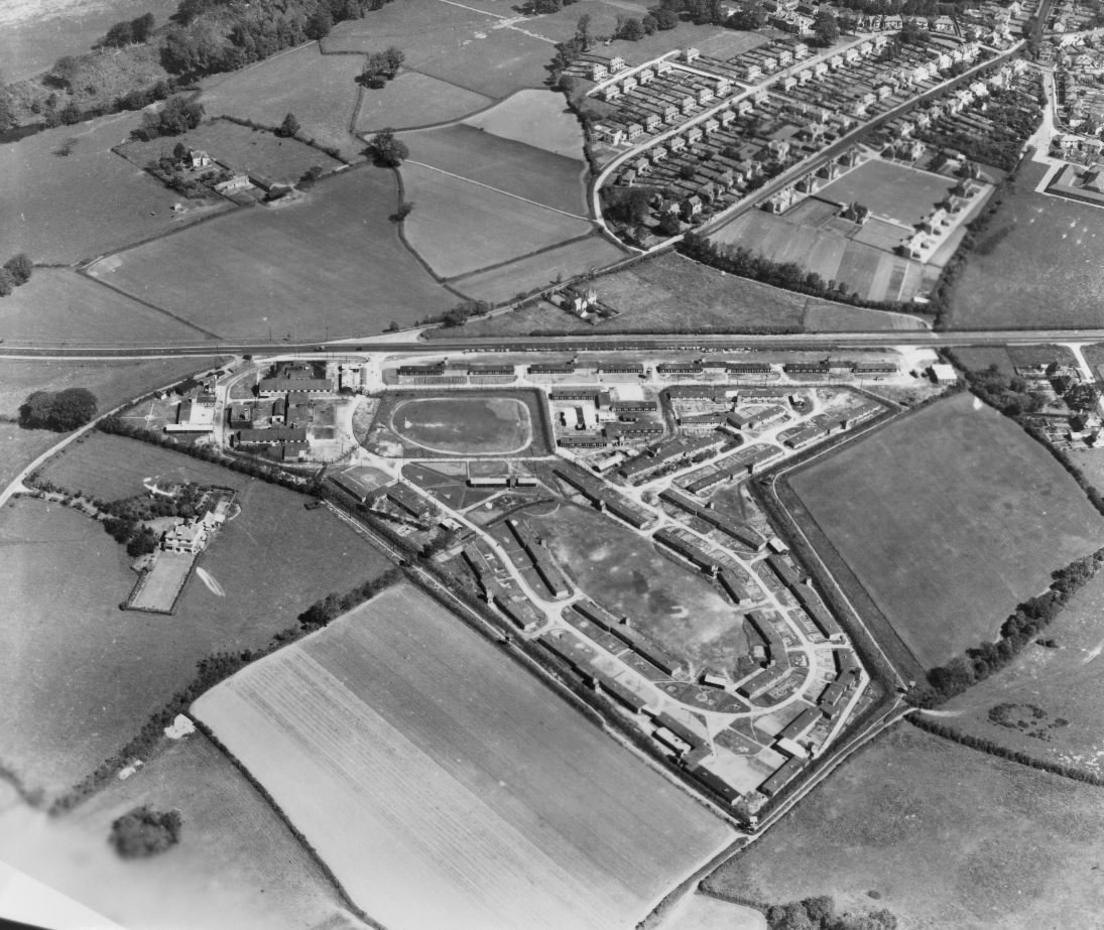
From the air: Island Farm in 1947

Brett Exton, chairman of the preservation group, said while the hut itself was safe, they faced losing their visitor centre, carpark, and storage for all the wartime artefacts they have collected over nine years.
"Hut 9 is a Grade 2 listed building, and owned by Bridgend Council, so that was never at threat, but the visitor centre and surrounding land is privately owned, and the landlord now wishes to sell," he said.
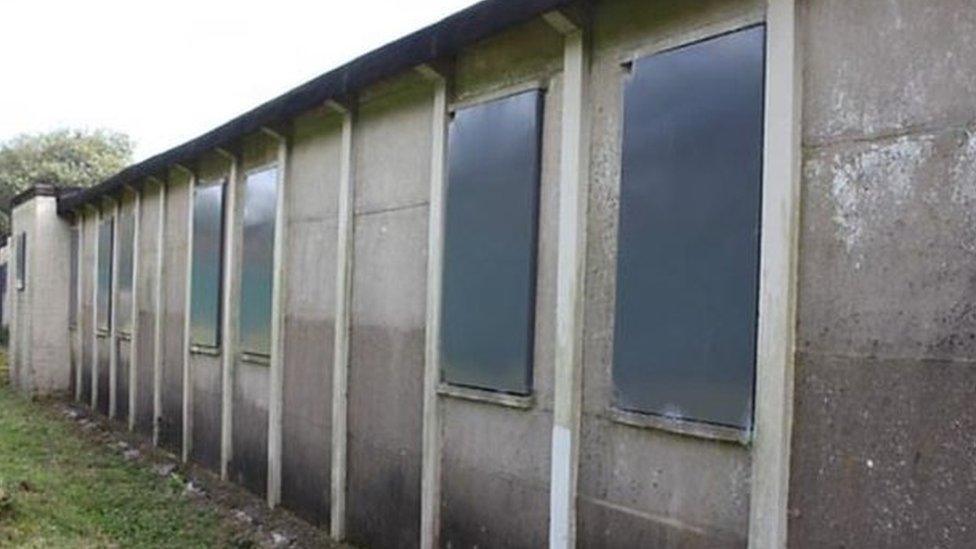
Hut 9: German prisoners of war tunnelled out from the hut in their escape bid
"Within weeks of launching the crowdfunding campaign in October we hurtled towards £10,000 and we thought it could be easy.
"After that things seemed to stall, and it took a real push on social media to get us over the line."
He said the £20,000 total was finally reached with an anonymous donation of £4,340.
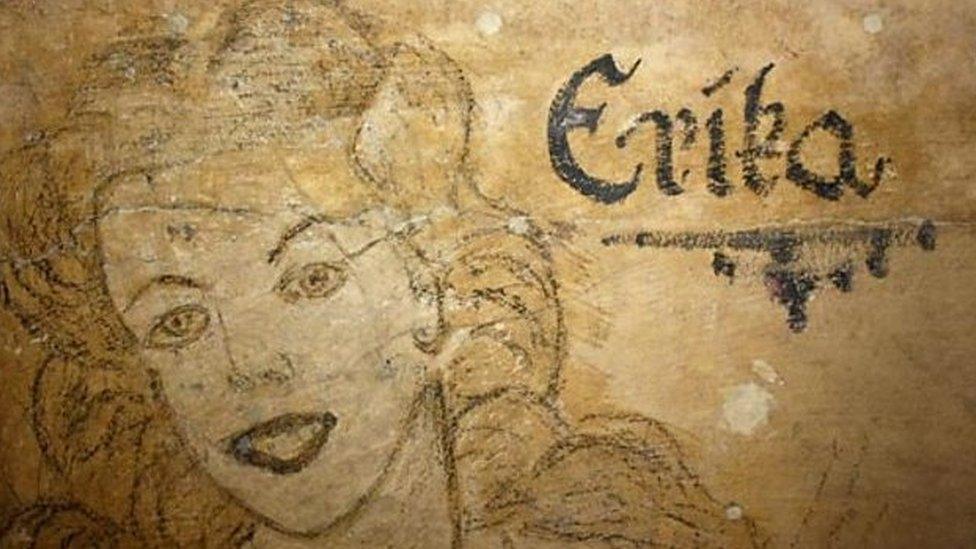
Graffiti drawn by prisoners can still be seen at the hut
Combined with the match-funding, this should now give them enough to purchase the land.
"We have to secure a legal valuation first, as being a registered charity we are forbidden by the Charity Commission from paying above the market value," said Mr Exton.
"Yet with some good will on both sides, I'd say we're as close as we've ever been."
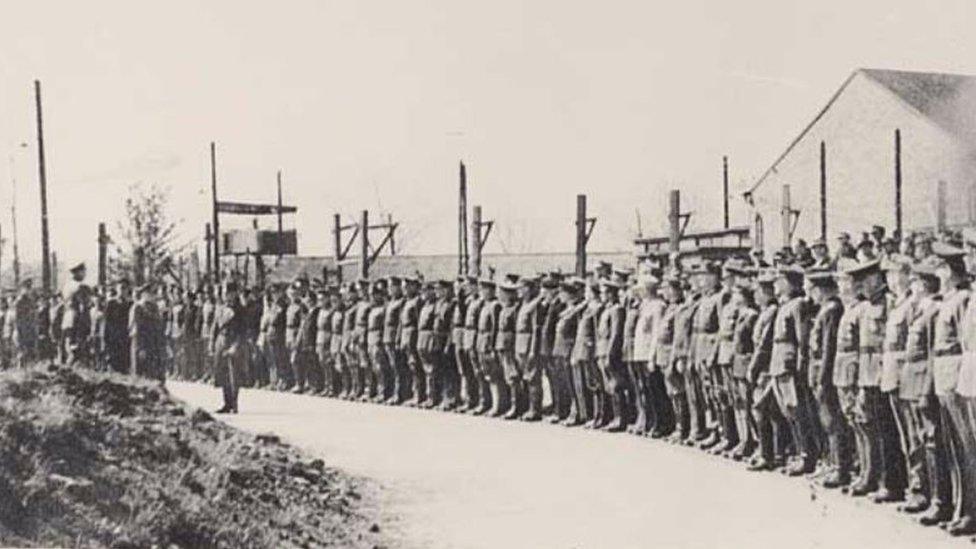
Officers at Island Farm salute Field Marshall Gerd von Rundstedt as he left to attend the Nuremberg war crime trials as a defence witness
What's the history behind Hut 9?
On 10 March 1945, 70 German soldiers tunnelled their way out of Hut 9 and under the perimeter wire.
They used slotted-together condensed milk cans to provide a ventilation shaft, lighting was wired to the camp's electricity supply, and tunnel props were cut from the camp's bunk beds.
Curry powder was sprinkled around the perimeter fence to confuse sniffer dogs.
Some made it as far as Swansea, Southampton and the outskirts of Birmingham.
When Mr Exton and his friends first unearthed the building that houses the visitor centre, it was neglected and vandalised.
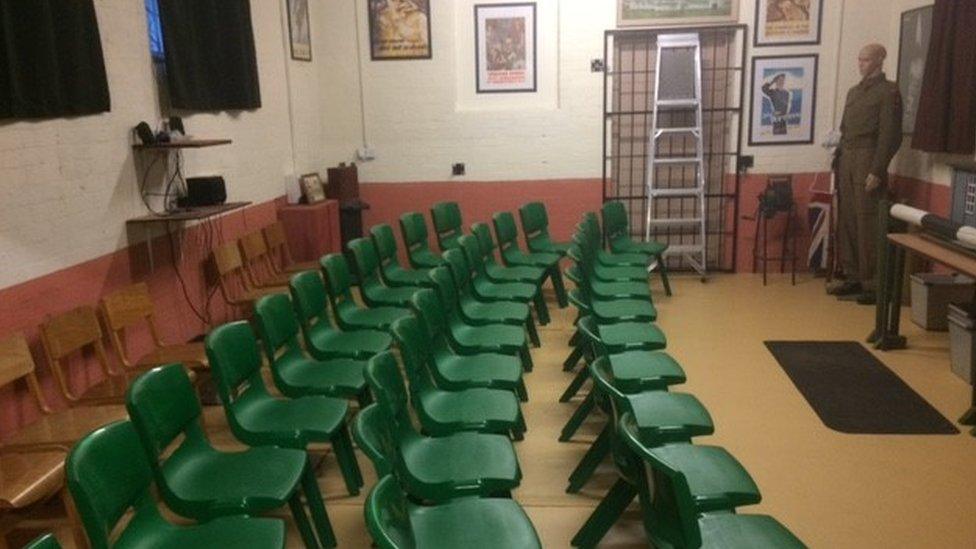
Until now the volunteers have been allowed to use the centre free of charge
Over the past decade they have maintained the site and provided security in return for rent-free access.
Mr Exton has assured donors that should they not be able to strike a deal, the donations they have received will not go to waste.
"Thanks to the generosity of our supporters, we now have options," he said.
"Obviously our first choice would be to remain at the visitor centre, but with money in the bank we can look at purchasing a mobile classroom, and investing in even more facilities."
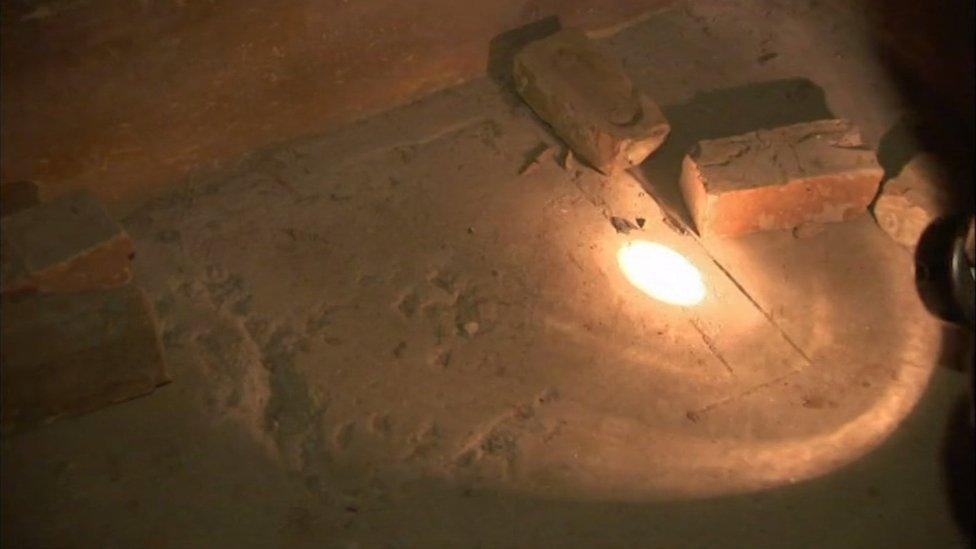
Inside Hut 9 lies the entrance to the now sealed tunnel
He said in the short term they had agreed a deal with Brynteg Comprehensive for the use of their facilities on open days in return for providing wartime experiences and talks.
"We hope to run a full programme of events throughout the summer season," he added.

STARS OF WALES: World class Welsh musical talent
LAST CHANCE TO SAVE: Will Millard explores some of Wales’s hidden historic buildings

Related topics
- Published10 October 2021

- Published6 June 2014
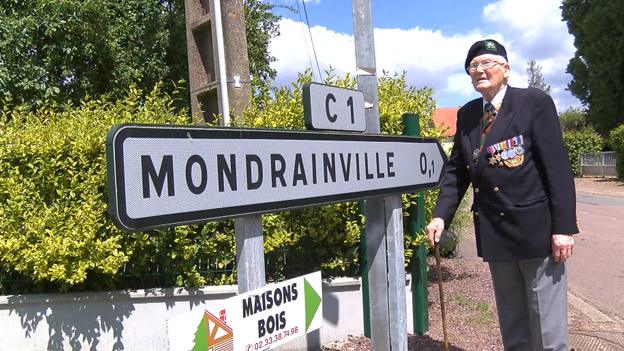
- Published4 January 2021
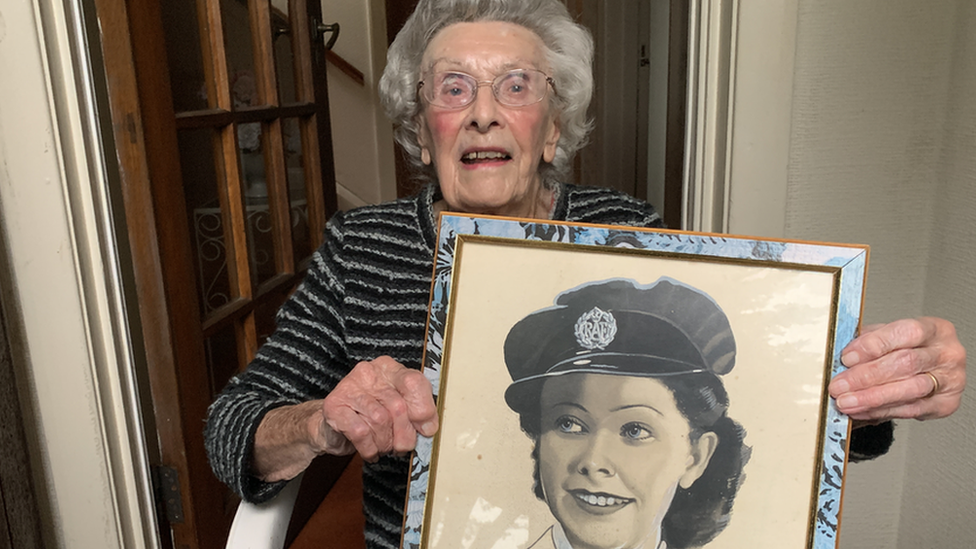
- Published6 June 2024
